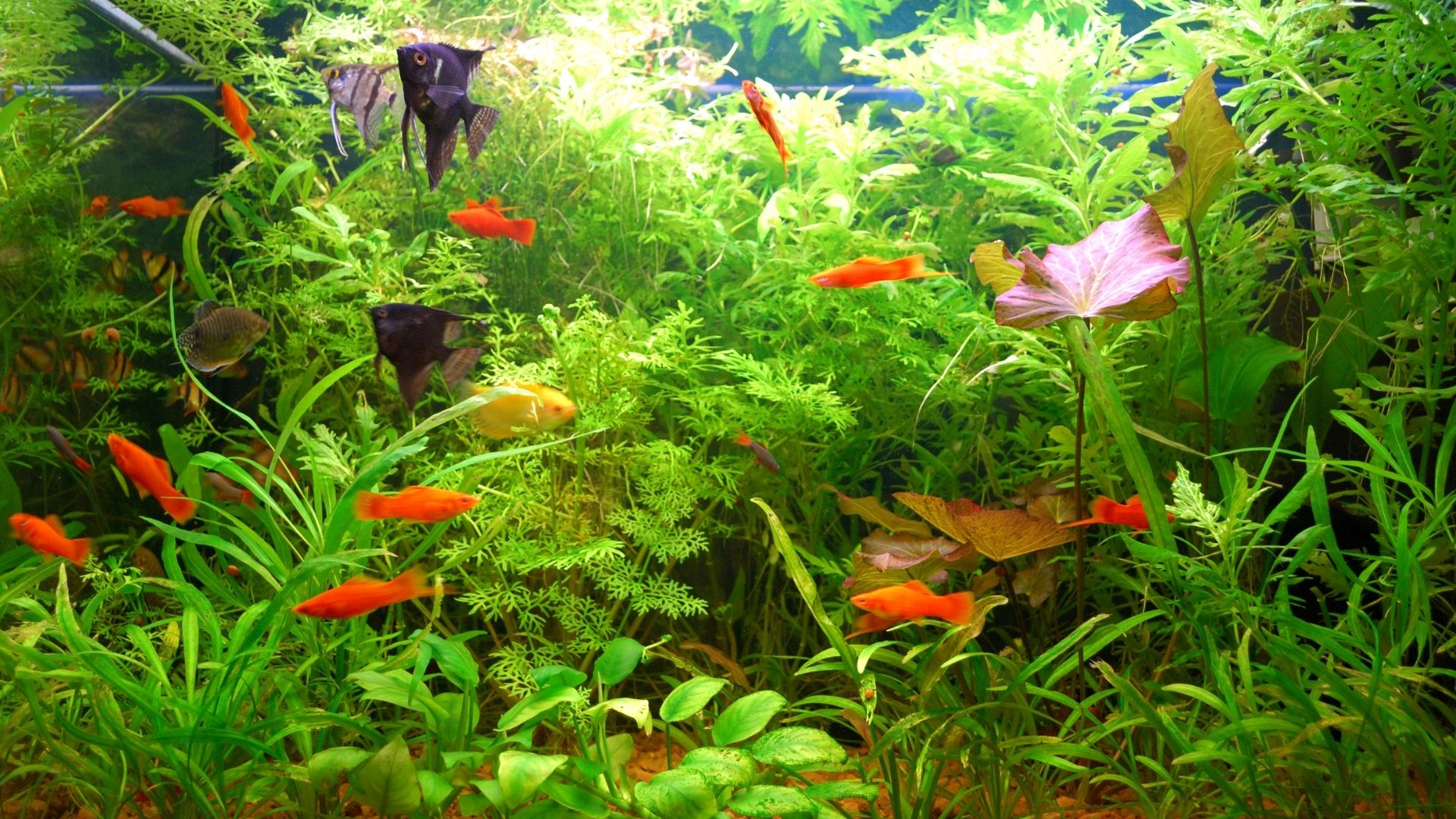Follow these easy Pet World Expert steps to setting up your new aquarium!
Guide To Setting Up An Aquarium
- Place your aquarium in an area where the light and temperature won’t be affected by the likes of radiators and windows. Placing the tank near direct sunlight can promote the growth of algae which can give your tank a cloudy and dirty image.
- Be sure to place the tank on a unit strong enough to support it, as a 120ltr tank will weigh 120kg with water before the actual weight of the tank and decorations are included as well. This is because 1 liter of water weighs 1 kg. You also have to take care with noise - loud noises can disturb fish so it is recommended to keep their habitat away from slamming doors, etc.
- Depending on the type of fish you plan to keep, different substrates can be used. Coldwater fish and cichlids like a higher pH level than community fish, In this instance you could use coral sand to increase the pH level. You usually would add 1kg of sand per every 10 liters of water.
Shop Aquarium Products
- Wash your tank with clean water, do not use detergents or chemical cleaners due to these being potentially life-threatening to the fish.
- Wash your decorations and substrate before putting them into the tank.
- Don’t fill the tank with water until you are satisfied with the layout. If you have a tropical fish tank, you must install a heater before adding tropical fish to ensure that they can live in the water.
- Wait about 15 minutes before plugging in the thermostat (this gives it time to adjust to the temperature).
- Then you add your filter to the tank. Top up the water to just under the hood lip, then add some water conditioner to remove all chlorine and fluoride from the water.
- Place your lights and lid back on the tank, ensure all cables are free from water then plug all the equipment in to see that everything is in full working condition.
- For a healthy aquarium, you must first wait until your tank has cycled before adding fish. The term ‘cycling’ is applied to the process which takes place as a new aquarium matures. This refers to the build-up of good bacteria, which breaks down waste.
- You can speed up the cycle by adding the Nutrafin Cycle, which promotes the growth of bacteria in your filter. You should always add the Nutrafin Cycle as this maintains the healthy bacteria in the tank.
- Test your water about a week after setting up your tank, but before you add any fish. This is to ensure that the Ammonia, pH, Chlorine, and Nitrate levels are all suitable for fish. Testing kits can be bought in Petworld or you can bring a sample of water into Petworld and a trained member of staff will test it for you in-store.

- If your aquarium chemical levels are suitable for fish, you can start your aquarium by adding some hardy fish like zebra danio or cherry barbs.
- Leave these fish for a week and then start adding slowly to your collection.
- Only add a few fish at a time as this gives the filtration system the time needed to take on the increased biological load that the new fish introduce.
- When you bring your fish home, let the bag float in the tank for about 30 minutes. After 5 minutes add some water from your aquarium into the bag so the fish can get used to the temperature and pH level of your aquarium.
- Practicing this procedure will reduce the amount of stress put on the fish (stressed fish pick up diseases very easily).
- When removing the fish from the bag, be sure to do so with the use of a net. Don’t feed the fish on the first day, as this gives them a chance to settle in the new tank and adjust to their surroundings.
Shop Popular Aquarium Ornaments
- Every week a 10 to 15% water change should be made and a gravel cleaner should be used.
- Using a ground cleaner will mean in the future you will not need to completely clean the whole tank out ever again.
- Filter maintenance is best done once a month or as needed depending on which type of fish you have in your tank. Please speak to a member of staff if you are not sure.
- Take a jug of water from your tank and clean all of the sponges in this water only. Do not under any circumstances wash your filter in tap water, as this will kill the bacteria living in your sponges.
- The pump head should be taken apart and cleaned once every 2 months.
- Please get a member of staff to show you how to do this if you are unsure. If you have carbon in your tank you should replace it every 6 to 8 weeks.
- Other plain sponges in the filter should only be changed when they start to fall apart or go out of shape.
- You should never change all of the sponges at the same time as this will be taking away the bacteria and may cause your tank to start cycling again putting a lot of stress on the fish.
If you have more questions, reach out to our nearest petworld store or call us now

